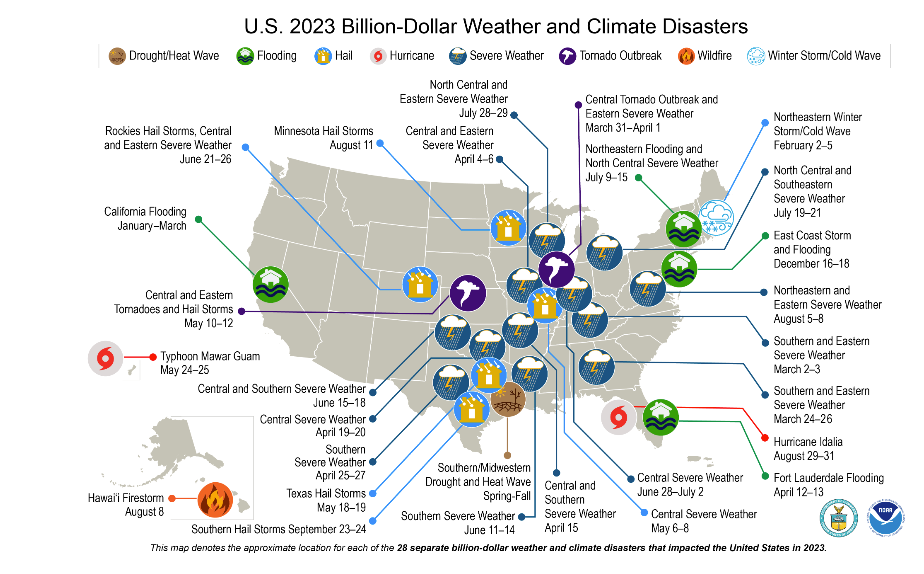US hit with highest ever number of billion-dollar climate disasters in 2023
There were 28 separate events that caused losses in excess of $1bn
Your support helps us to tell the story
From reproductive rights to climate change to Big Tech, The Independent is on the ground when the story is developing. Whether it's investigating the financials of Elon Musk's pro-Trump PAC or producing our latest documentary, 'The A Word', which shines a light on the American women fighting for reproductive rights, we know how important it is to parse out the facts from the messaging.
At such a critical moment in US history, we need reporters on the ground. Your donation allows us to keep sending journalists to speak to both sides of the story.
The Independent is trusted by Americans across the entire political spectrum. And unlike many other quality news outlets, we choose not to lock Americans out of our reporting and analysis with paywalls. We believe quality journalism should be available to everyone, paid for by those who can afford it.
Your support makes all the difference.The United States experienced a record number of billion-dollar weather and climate disasters in 2023, the National Oceanic and Atmospheric Administration (NOAA) announced on Tuesday.
There were 28 separate events that caused losses in excess of $1bn – the highest number since the federal agency began keeping tally four decades ago. The combined cost for these disasters was nearly $93bn, an amount that may still rise by several billion dollars as more costs are discovered.
The most expensive was the drought and heat wave across the US South and Midwest which lasted for around six months of last year, and cost $14.5bn. Severe weather that struck southern and eastern states in March cost a further $6bn.
At least 492 people died in the 28 disasters, according to NOAA.
Last year surpassed 2020’s previous record of 22 events. In the past 40 years, the US has experienced 376 weather and climate disasters with a price tag above $1bn each, totalling $2.7 trillion in losses, according to the National Centers for Environmental Information.
On the 2023 list were 17 storms, four major floods, two tropical cyclones, two tornado events, a winter storm, a wildfire, and a combined drought/heatwave.
Among the catastrophes was the wildfire that tore through the town of Lahaina, Hawaii in August, killing around 100 people. It was the deadliest wildfire in the US for more than a century.

US wildfires in 2023 were roughly on par with the 10-year average, NOAA said, with more than 55,000 blazes in the past 12 months. Some 2.6 million acres were destroyed, way down from the 10-year average of 7 million.
The US was significantly impacted by hundreds of wildfires across Canada in 2023 - which also played a major role in the 30 per cent rise in global wildfire emissions. In June, New York City reported the worst air quality in the world due to wildfire smoke as more than 100 million people in 16 states were placed under alerts.
August also saw Hurricane Idalia smack into Florida’s west coast as the strongest hurricane to hit the region in more than 125 years, NOAA said. Overall, 20 named tropical cyclones developed in the Atlantic basin – the fourth-highest number since 1950 – linked to record ocean temperatures.
Nearly half of the US suffered drought conditions during 2023, with a “flash” drought experienced across much of the Lower Mississippi Valley in the second half of the year.
Two tornado outbreaks across eastern and central states on 31 March- 7 April, and 10-12 May, causes damages of more than $1bn. In all, there were 1,197 tornadoes reported in the US last year, an above average number of twisters.
The US also experienced its fifth warmest year on record in 2023 amid the planet’s hottest year on record.

Join our commenting forum
Join thought-provoking conversations, follow other Independent readers and see their replies
Comments